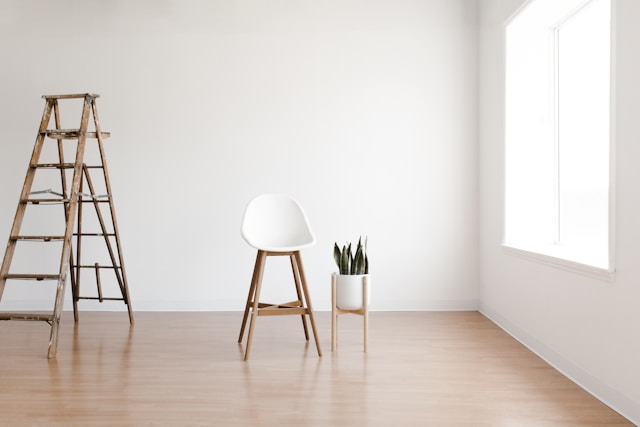Painting a room is one of the easiest and most affordable ways to completely transform your space. Whether you’re refreshing a tired color, covering up scuffs, or giving a room a whole new vibe, learning how to paint a room like a pro can save you time, money, and frustration. With the right tools, techniques, and a little patience, even a first-time DIYer can achieve smooth, professional-looking results.
This home painting guide will walk you through every step of the process from choosing paint colors to cleanup so you can confidently tackle your next painting project.
Why Paint a Room Yourself?
Hiring a professional painter can be expensive, but painting walls like a pro is totally doable for most homeowners and renters. In addition to cost savings, doing it yourself allows you to:
-
Customize the look and feel of your space
-
Work at your own pace
-
Enjoy the satisfaction of a job well done
It’s also a great weekend project that can make a dramatic impact with minimal investment.
What You’ll Need: Tools and Supplies
Before you begin, gather the essential tools and materials:
Basic Supplies:
-
Interior paint (choose your finish: flat, eggshell, satin, semi-gloss)
-
Angled paintbrush (2–2.5 inches)
-
Paint roller and extension pole
-
Paint tray and liners
-
Drop cloths or plastic sheeting
-
Painter’s tape
-
Stir sticks
-
Ladder or step stool
Optional but Helpful:
-
Paint edger tool
-
Sanding block or sponge
-
Spackle and putty knife (for wall repairs)
-
Caulk and caulk gun (for baseboard gaps)
-
Paint can opener
-
Clean rags or paper towels
Having the right tools is one of the keys to learning the best way to paint a room with clean lines and an even finish.
Choosing the Right Paint Color
Selecting a color can be the hardest part of painting. Consider these tips:
-
Test swatches: Don’t rely on paint chips alone. Apply sample colors directly to your wall and observe them in different lighting throughout the day.
-
Consider undertones: Colors may look different depending on your lighting and furnishings.
-
Match your vibe: Think about the mood you want to create. Warm tones add coziness; cooler tones promote calm and focus.
Color choice is an important part of DIY room painting tips because the right hue can completely change a room’s personality.
Preparing the Room
Preparation is essential for a clean and professional-looking result. Don’t skip this step!
Step 1: Clear the Space
-
Remove furniture or move it to the center of the room and cover with plastic
-
Take down wall decor, switch plates, and outlet covers
Step 2: Clean the Walls
-
Wipe down surfaces with a damp cloth to remove dust and grime
-
Use mild soap for greasy spots (especially in kitchens)
Step 3: Repair and Sand
-
Fill holes or cracks with spackle and sand smooth once dry
-
Lightly sand glossy surfaces to help the paint adhere better
Step 4: Tape Off
-
Apply painter’s tape to baseboards, trim, and edges
-
Press firmly to prevent paint bleed
Proper prep work is a cornerstone of painting techniques for beginners and it makes a huge difference in the final look.
Cutting In: The Professional Touch
“Cutting in” refers to painting the edges and corners with a brush before using a roller. This creates clean lines and ensures full coverage.
Tips for Cutting In:
-
Use a high-quality angled brush
-
Don’t overload the brush with paint
-
Paint a few inches along the edges (ceiling, corners, trim)
-
Feather the edges so they blend smoothly with the roller
If you’re nervous about this step, an edger tool can help you get crisp lines with less practice.
Rolling the Walls
Now it’s time to roll on the color!
Pro Rolling Technique:
-
Start in a corner and roll in a “W” pattern
-
Fill in the gaps without lifting the roller
-
Use even pressure to avoid streaks
-
Keep a wet edge to prevent lap marks
Apply one coat and allow it to dry fully (usually 2–4 hours depending on paint type and humidity). Then apply a second coat for even coverage.
Finishing Touches
Once your final coat is dry, it’s time to wrap things up:
-
Carefully remove painter’s tape while the paint is slightly tacky to prevent peeling
-
Touch up any missed spots with a small brush
-
Reattach switch plates and outlet covers
-
Move furniture back after the paint is fully cured (usually 24–48 hours)
Cleaning your brushes and rollers promptly ensures they’ll be ready for the next project.
Pro Tips and Common Mistakes to Avoid
Even the best intentions can be undone by simple errors. Here are some DIY room painting tips to help you steer clear of mistakes:
Do:
-
Invest in quality brushes and rollers
-
Mix all paint cans together (boxing) for color consistency
-
Use primer if you’re painting over dark or glossy walls
Avoid:
-
Rushing the prep work
-
Skipping the second coat
-
Painting in extreme humidity or direct sunlight
Conclusion: You Can Do This
Learning how to paint a room like a pro doesn’t require years of experience just the right tools, solid preparation, and a willingness to take your time. With this step-by-step home painting guide, you’re equipped to take on your next interior painting project with confidence.

